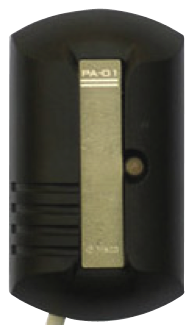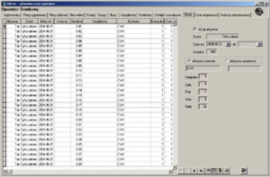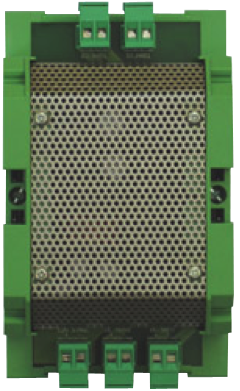Proximity terminal AC-PA01
OPIS PRODUKTU
The AC-PA01x reader is used to read the code from the proximity card and send it to the system for verification. This reader is not a standalone device, but an EB-AC2201 controller module.
The reader does not verify the card authorizations itself because the decision-making process and the user base have been transferred to the central unit of the system. In this way, each user can be assigned individual access rights in specific time periods, taking into account individual days of the week, non-working days and holidays. The number of system users that can be defined is theoretically not much smaller than the number of people living on the ground, so it is possible to create a really large and extensive access control system.
The reader itself is also not an executive element of door control, so there is no risk of unauthorized access as a result of an attempt to tamper with the reader. What’s more, each unauthorized attempt to force the door, as well as any authorized access, is recorded in the history of the system events, taking into account the exact time of the event.
After reading the card number, the reader informs with an acoustic and optical signal whether access is possible. The decision to grant access may be made automatically by the system or by the operator after prior verification by the central unit.
The readers are manufactured in two versions, AC-PA01M and AC-PA01S. They do not differ in appearance or mode of operation, at least from the user’s point of view. The AC-PA01S version is used in the case of two-way door control, when two readers are to be connected to one controller.
Two readers of the same type cannot be connected to one controller.
| Power supply: | Nominal voltage 12V, |
| Power consumption: | Min 10mA (standby mode) Max 40mA (when reading the card) |
| Frequency: | 125kHz |
| Communication: | RS 232, speed 19200 b/s |
| Optical signaling device: | There is a diode on the front casing of the device indicating the status of the terminal. Can be specified the following optical diode signals: – blinking red – devices powered up, no communication with the computer – lit red – the device has detected a card. Every now and then, when the computer communicates, the LED goes out. |
| Cover class: | IP66 |



